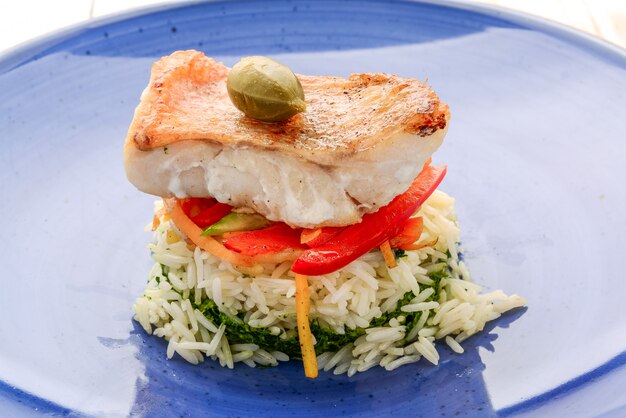Table of Contents
About the species
The Pacific halibut is the largest species of flatfish. It is native to the North Pacific Ocean and is fished by commercial, recreational, and subsistence fishermen. The enormous Pacific halibut, sometimes called “barn doors,” can reach a length of more than 8 feet and a width of more than 5 feet. The halibut is born swimming like salmon, with its eyes on either side of its head. As they grow older (when they are six months old), one eye migrates to the right side and the young halibut begins to swim sideways, with both eyes on top of their bodies. Their large size and delicious meat make them a popular and prized target for sport and commercial fishermen.
Pacific halibut caught in the United States is a smart seafood choice because it is managed sustainably and harvested responsibly under US regulations. USA
State
Based on the 2018 stock assessment, Pacific halibut is not overfished and fished at recommended levels established by the International Pacific Halibut Commission. The population decreased from 1997 to 2013. It has increased since 2013.
Appearance
The Pacific halibut has flat, diamond-shaped bodies.
They swim sideways, and the top is typically mottled gray to dark brown, helping them blend in with sandy or muddy bottoms. Its lower part is typically white.
Both eyes are on the upper part of his body.
Their scales are small and buried in the skin, giving them a smooth appearance.
biology
The Pacific halibut is one of the largest flatfish – it can weigh up to around 500 pounds and grow to over 8 feet in length.
Males tend to be smaller than females.
Males mature sexually when they are 8 years old, and females can reproduce at the age of 12 years.
They breed during the winter in deep water along the continental slope, mainly in the Bering Sea, the Aleutian Islands, the Gulf of Alaska and south to British Columbia.
Depending on their size, females can have between 500,000 and 4 million eggs.
Scientists believe that females release their eggs in batches for several days during the spawning season. The eggs hatch after 12 to 20 days, depending on the temperature of the water.

The larvae float slowly near the surface, where they remain for approximately 6 months until they reach their adult form and settle to the bottom in shallow water.
The larval Pacific halibut feeds on zooplankton (small floating organisms).
Juveniles eat small crustaceans and other organisms that live on the seafloor.
The halibut lives to be relatively old: the oldest recorded halibut is 55 years old, but the halibut over 25 years old is rare.
Adults aggressively prey on a variety of groundfish, scultines, sand spears, herring, octopus, crabs, clams, and occasionally smaller Pacific halibut.
Marine mammals and sharks sometimes eat Pacific halibut, but due to its large size, the adult Pacific halibut is rarely hunted by other fish.
Where they live
The Pacific halibut is found in coastal waters from Santa Barbara, California, to Nome, Alaska.
They are most common in the central Gulf of Alaska, particularly near Kodiak Island.


![Solve the [pii_email_f4b5cea0d89e1632bac9] Error Code 2021?](https://www.technipages.com/wp-content/uploads/2021/03/Teams-Connection-Error.jpg)